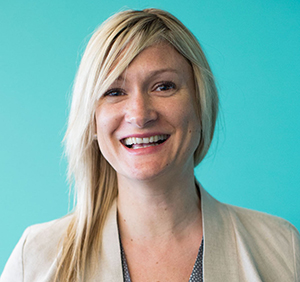Catriona Moriarty is the director of learning and development (L&D) at energy technology provider Opower, and she is responsible for designing and implementing learning programs for over 500 staff members worldwide. I recently caught up with Catriona to learn about how her company approaches L&D, creating effective learning for Millennials, and why learning professionals should be thinking about virtual reality today.

Catriona Moriarty
Doreen Lorenzo: Where does learning and development fit within Opower? How is it all structured?
Catriona Moriarty: I report to the senior vice president of people. We’re an independent arm of the people team. We manage our own budget and design and deliver learning interventions. We also liaise with external consultants for business-unit-specific technical needs.
DL: What are some of the training challenges within your company, and what are you trying to accomplish? What are some of the goals you are setting out that you feel having L&D in the company is helping your employees solve?
CM: I think it’s the typical challenges that you get in many organizations today—we have a dispersed, distributed workforce; we have people in separate offices, different time zones, that global aspect. So the challenges in terms of learning are responding to the needs of the business first and prioritizing what it is that we’re going to work on, being that we’re a tiny team. After we set those priorities, it’s how do we actually get our content out to people in that distributed environment. And what all the different modes of delivery are that we can leverage to make sure that we’re getting the content to people when they need it, quickly.
DL: Both Millennials’ unique learning patterns and the rise of contract workers are changing the culture of work today. As you start to think about learning programs, does that factor into how you design these programs?
CM: In general, I think Millennials’ attention spans are a little bit shorter than Baby Boomers’ attention spans. That is actually a good thing because you have to be really focused on whatever it is that you’re teaching. So I start with identifying the audience, figuring out who it is that you’re teaching the content to, and making the tweaks so that it’s sticky and relevant to them. Then I make sure that we’re communicating those objectives to them and also setting up some informal moments throughout the day so that they can have that social and peer-to-peer learning amongst themselves.
DL: What are some of the L&D trends you’re following closely?
CM: One of the things right now that I’m really fascinated with is looking at virtual reality and wondering if there’ll be some extension of it that we might use to leverage that technology in the workplace. Particularly, when I think about things like trying to teach something like empathy, or trying to teach some of these softer skills, there could be a real opportunity there to look at how we might simulate some of these emotions for people by giving them that safe space to kind of experiment and try on new behaviors and new, maybe less comfortable ways of interacting with each other. Video learning and body language, actually being able to see and experience someone you admire make a sale or finesse a negotiation—now that is a memorable and sticky learning moment.
DL: Can L&D fuel the innovation process within companies?
CM: Absolutely. Looking at building people’s skill sets around understanding differences between people, and then how they interact with each other, is so important to whether or not the best ideas get heard. So whether or not the best ideas get put out on the table in the first place, it’s really simple when you think about meeting-management practices where people are interrupting one another, not being cognizant of speaking patterns and who is dominating a meeting. So with things like that, I’m always reinforcing this idea of being mindful of your impact on others within the organization. What are those communication preferences or those decision-making styles that you are bringing to the table, and are you really actively inquiring into other people’s reasoning and truly coming from a place of inquiry versus always just advocating for your idea being the best idea? So it’s things like that that throughout all of our programs I’m hoping to instill in people; this idea of being curious, this idea of needing and wanting to learn about other perspectives at every step of the way, whether that’s in a product discussion or in people’s day-to-day communication style.

